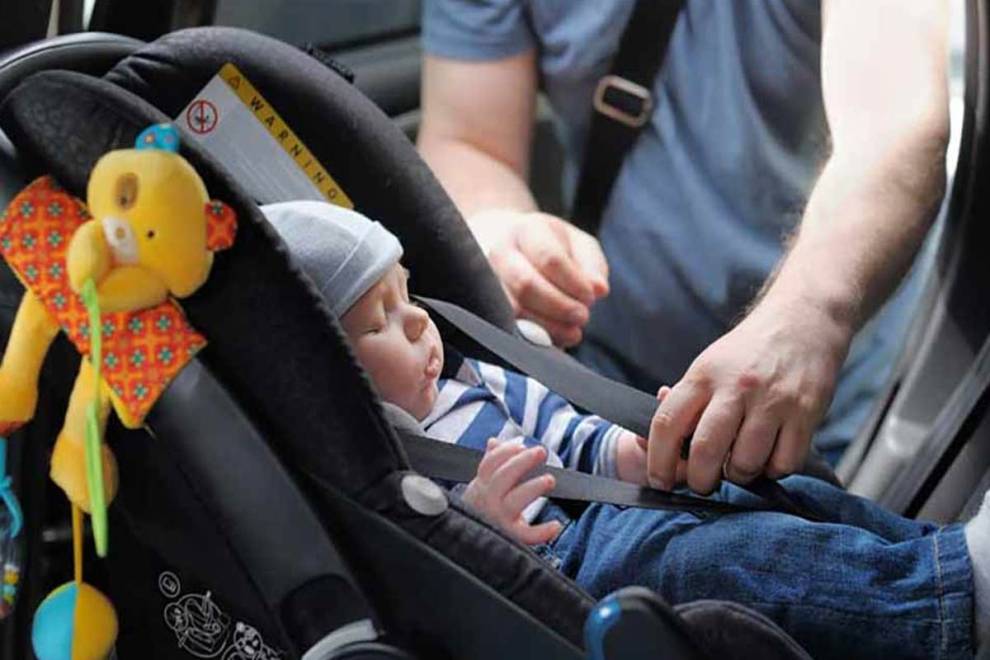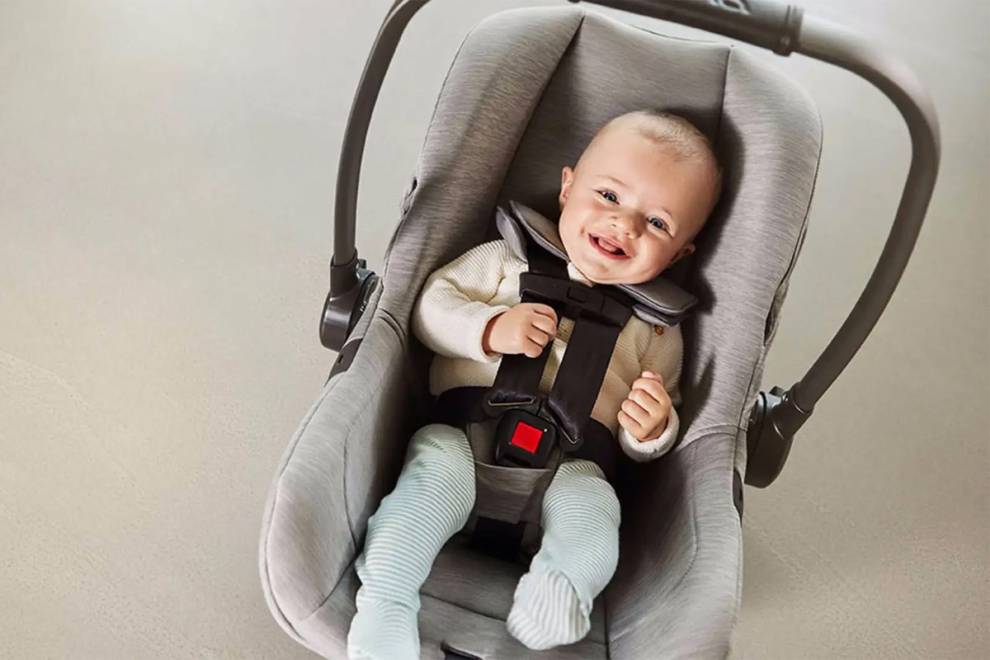Is your Car Seat Expired? Dates and Guidance
Learn how to spot an expired car seat and how it impacts your little one's safety.

Mommyhood101 independently tests and curates baby gear to help you make informed decisions. If you buy products through links on our site, we may earn a commission.
Car seats vary widely in the number of years they can be used after their production date. Some car seats expire after only 6 years, whereas some of the best convertible car seats and best infant car seat models expire upwards of 10 years after their manufacturing date.
Because these vary so much, and the labels or imprints can be so hard to find, we've developed this car seat expiration guide to make your life a little easier!
While we've done our best to ensure the accuracy of this list, always be sure to check your own car seat's expiration date before relying solely on information you read online! Also be sure to check out our full guide to the safety of infant car seats.
Car Seat Expiration Dates
Below are several tables including expiration date guidelines from five top car seat manufacturers, including Graco, Britax, Chicco, Evenflo, and Safety 1st. Expiration date indications and user guide links are listed for each brands’ infant car seats, convertible seats, and boosters. Remember, be sure to check out our annual reviews of the best infant car seats, the best convertible car seats, best booster car seats, and over 75 baby product review categories! These are current for 2020, and we will continue to update them as new models emerge and expiration ranges change.

Graco Infant Car Seat Expiration Dates and Owners Manuals
Here is a table that includes Graco infant car seat expiration dates and owners manuals.
Graco Convertible Car Seat Expiration Dates and Owners Manuals
Here is a table that includes Graco convertible car seat expiration dates and owners manuals.
Graco Booster Car Seat Expiration Dates and Owners Manuals
Here is a table that includes Graco booster car seat expiration dates and owners manuals.

Britax Infant Car Seat Expiration Dates and Owners Manuals
Here is a table that includes Britax infant car seat expiration dates and owners manuals.
Britax Convertible Car Seat Expiration Date and Owners Manuals
Britax Booster Car Seat Expiration Dates and Owners Manuals

Chicco Infant Car Seat Expiration Dates and Owners Manuals
Chicco Convertible Car Seat Expiration Dates
Chicco Booster Car Seat Expiration Dates

Evenflo Infant Car Seat Expiration Dates
Evenflo Convertible Car Seat Expiration Dates
Evenflo Booster Car Seat Expiration Dates

Safety 1st Infant Car Seat Expiration Dates
Safety 1st Convertible Car Seat Expiration Dates
Safety 1st Booster Car Seat Expiration Dates
Before hospital discharge with a term infant, the American Academy of Pediatrics offers guidance to pediatricians and health care providers to evaluate both health and safety for mother and child, including the availability and familiarity with an appropriate car seat for the child. Numerous factors influence car seat selection including the child’s weight and the seat’s physical properties. However, one consideration is often overlooked—the car seat’s expiration date.
Most parents know to purchase a new car seat in the case of a collision, but would they think to replace the seat after a specific date? It is not uncommon to see car seats and boosters listed for sale in Facebook groups and at yard sales. However, popular car seat manufacturer, Graco, warns, “Used or expired car seats can be dangerous, especially if you don’t know the car seat’s history.” Expiration dates are prescribed due to the plastics composing many car seat shells. Over time, these plastics wear down and become brittle. Education organization Car Seats for the Littles describes a familiar scenario, “Remember that time you sat down in a plastic lawn chair that had been sitting outside for several summers, and crashed right through to the ground? The same is possible for a car seat that has extended past its expiration: the plastic could break apart and fail to serve its purpose of keeping a child safe and uninjured in a crash.” Car seats are exposed to varying temperatures, direct sunlight, and jostling through use; their plastics receive a considerable amount of stress. So, in addition to selecting from a variety of manufacturers, with a variety of models and patterns, parents must also consider the structural material and how long ago the car seat was produced.
Selecting the right car seat
“The AAP advises parents to keep their toddlers in rear-facing car seats until age two, or until they reach the maximum height and weight for their seat.” To begin, parents will consider their child’s age and weight; these factors will indicate which seat style (Infant, Convertible, or Booster) is safest for protecting the child.
- Infant: Infant car seats are used for babies from birth to up to 35 pounds (depending on seat model). Infant seats are rear-facing and typically include a handle allowing the carrier to click in and out of the installed car seat base.
- Convertible: Convertible car seats are used for babies and toddlers up to 50 pounds (depending on seat model). Convertible seats can be used for an extended time period (within their plastic life limits) as they “convert” from rear- to front-facing once the child has met recommended age/weight limits.
- Booster: Belt-positioning booster seats are used for children who exceed the height/weight limits for their forward-facing car seats. Boosters can be backless or high back and are typically used until children reach about 4 feet 9 inches (depending on state laws).
Child passenger safety laws vary by state. Parents should be aware of laws in their state and can visit the IIHS List of State Laws for Vehicle Restraints.
Examine vehicle bench space: When selecting a car seat, parents will want to examine the bench space in their vehicle, taking careful notice of both type of seat belt (as this can impact seat selection) and the amount of space. For vehicles with little room in the back seat, a car seat with a narrower base might be a better option.
Note harness adjuster location: Infant and convertible car seats have adjustable harness straps to grow with babies. The adjustments may be made with a knob or lever on the side, back, or front of the seat. Consider car seat placement and other car seats or siblings in the car to ensure the harness adjuster is accessibly located.
Chest clip options: Most new car seat models have a two-piece chest clip, as these are more difficult for children to unfasten. However, there are still some brands/ models that use the one-piece chest clip, so parents should be aware of this feature while making their decision.
Consider cleaning: In addition to a myriad of adorable colors and patterns, each car seat option is made of different fabrics. Parents may want to consider fabric, along with the seat shape and design when selecting a car seat, as these features will impact how easy the seat is to clean. Textured fabrics on a model with deep creases may be more difficult to clean in the case of a … mess. Smoother fabrics will wipe clean more easily.
Car Seat Installation Tips
Here are some general tips and reminders for car seat installation. This information in no way replaces instructions in the car seat’s user manual; it is imperative that parents thoroughly read the seat’s instructions to ensure safe car seat installation and use.
Infant car seat installation
- Infant car seats should be installed rear-facing in the back seat of the vehicle.
- Install car seat while the vehicle is parked on level ground to facilitate proper seat angle adjustments.
- Ensure the harness straps are fed through the seat slots at or below the baby’s shoulders to avoid any slack.
- “Do not place padding under or behind your infant or use any sort of car seat insert unless it came with the seat or was made by the manufacturer for use with that specific seat.“ To avoid infant slouching, some manufacturers allow a tightly rolled cloth to be placed between the crotch strap and the infant (review manual for this indication).
Convertible car seat installation
- “Always use the top tether when you can. A tether is a strap that is attached to the top part of a car safety seat and holds the seat tightly by connecting to an anchor point in your vehicle.” Check both car seat and vehicle user guides to ensure belts are used and fed according to indications.
- Position harness straps as close to the child’s shoulders as possible.
- Regularly check to ensure harness straps have not twisted or tangled.
Booster car seat installation
- Ensure the vehicle’s seat belt crosses directly over the child’s upper thighs.
- The shoulder belt should cross the middle of the child’s chest and not touch the child’s neck. Many high-back boosters have shoulder belt guide-slots to ensure proper positioning.

7 Car Seat Mistakes Parents are Making
We've come a long way since the vintage car seats that our parents and grandparents...

New Recommendations for Rear-Facing Car Seats
The American Academy of Pediatrics (AAP) recently changed their recommendations for how...

Infant Car Seat Safety Features: A Full Guide
All infant car seats are safe enough to meet federal standards, but some come with extra...

Baby Jogger City Turn Review & Video
The Baby Jogger City Turn is an awesome example of a rotating car seat, a real...


